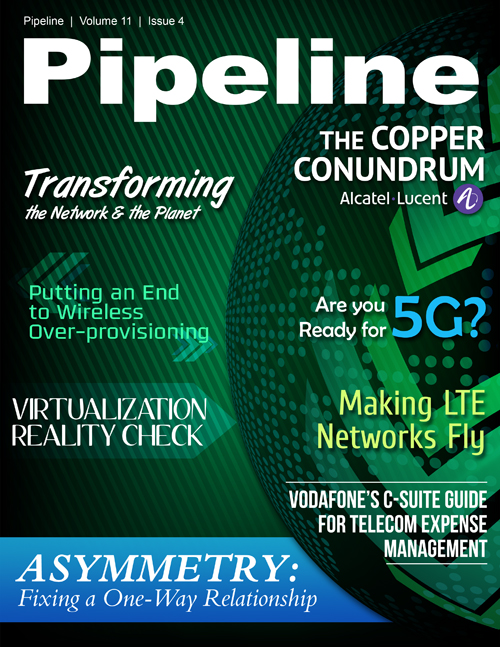Are you Ready for 5G?
Mobile traffic today is driven by somewhat predictable activities: making calls, receiving email, surfing the web, and watching videos. Over the next 5 to 10 years, billions of new devices with less predictable traffic patterns will join the network, including cars, machine-to-machine (M2M) modules, video surveillance that requires 24-7 bandwidth, or even a biohazard sensor that sends out tiny bits of data each day. Stir in the effects of the meteoric rise of cloud computing and it’s easy to see why new network strategies will be crucial to the fifth evolution of mobile.
Currently, 5G represents a convergence of network access technologies. As Ian Miller, director of radio access networks (RANs) at Telefónica, said at last year’s Mobile World Congress, “It’s all about how we stick these varying access technologies together seamlessly—right now it’s a little clumsy.”
Additionally, baked into the idea of fifth-generation wireless is customer experience. While past Gs have seemed focused on network abilities, 5G’s goal is to always offer the right ability for the right service. “Of course there will be substantial speed increases,” said Tod Sizer, head of wireless research at Bell Labs, at Mobile World Congress 2012. However, weaving different access technologies together in a fluid fashion and creating smart gateways that choose the “best” connectivity for a given situation, not to mention in a transparent manner, will be the DNA that gives life to 5G.
Drawing outlines of the future
Creating a clear picture of 5G wireless is not an easy task because many technologies will converge and interoperate to bring about this evolved network. “The 5G system will not be a single technology but rather a combination of integrated RATs [radio access technologies], including evolved versions of LTE and HSPA [high-speed packet access], as well as specialized RATs for specific use cases,” writes Ericsson in a white paper.
Some of the qualities of a 5G network include:
- mobile data rates of multiple gigabits per second;
- higher spectral efficiency and advanced beam-forming technology;
- a dramatic reduction in power consumption by both devices and macro- and microcell sites;
- latencies of less than five milliseconds end to end;
- a larger number of supported devices;
- pervasive coverage;
- extreme reliability; and
- self-healing capabilities.
Huawei has since published a white paper on 5G technology and built a research center devoted to 5G development. Huawei now defines 5G as follows:
"5G wireless networks will support 1,000-fold gains in capacity, connections for at least 100 billion devices, and a 10 Gb/s individual user experience capable of extremely low latency and response times. Deployment of these networks will emerge between 2020 and 2030. 5G radio access will be built upon both new radio access technologies (RAT) and evolved existing wireless technologies (LTE, HSPA, GSM and WiFi). Breakthroughs in wireless network innovation will also drive economic and societal growth in entirely new ways. 5G will realize networks capable of providing zero-distance connectivity between people and connected machines."
GSMA urges patience
The increasing hype surrounding 5G technology has been greeted by a surprising source of skepticism: that of the GSMA.
Speaking at 5G World Summit, as part of the wider LTE World Summit in Amsterdam, Dan Warren, Director of the Technology at GSMA, said his role was to try and slow down the seemingly inexorable march towards 2020, when the first 5G commercial launches are expected.


















